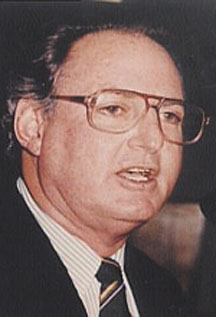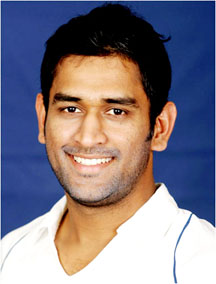By Tony Cozier At the ICC World Cup In DELHI
These have been a few bad days for the International Cricket Council (ICC) at its own World Cup.
Their boss, Haroon Lorgat, has tried to make light of a disturbing security breach by flippantly describing the stones pelted at the West Indies team bus after their victory over Bangladesh in Mirpur on Sunday as “pebbles.”
That was accompanied by what was termed “clarification of interpretation” on the matter of replacement of injured players and by a couple of alterations to regulations regarding the Umpires’ Decision Review System (UDRS).
It is abnormal, to say the least, for a leading administrator to downplay a security breach in this day and age as is tinkering with the set rules well into such a major tournament.
Lorgat’s take on the Mirpur incident was immediately, rightly and roundly denounced by West Indies coach Ottis Gibson who was directly in the line of fire from the angry Bangaldeshi fans.
“I just want to make it clear first of all and remind Haroon Lorgat of his responsibility,” Gibson fumed, with good reason. “He can’t sit in a hotel room in Chennai and say they were pebbles.
“What we heard hitting the bus and smashing glass didn’t seem to us to be pebbles,” he added. “So it is not fair to make a statement like that. We as management of West Indies team here believe that was a ridiculous statement to make.”
Lorgat is no less than the chief executive of the ICC. His remarks were out of place and deserving of an apology. As yet, there has been none.
Gibson and officials of other teams might also have been astonished to learn that Mike Hussey of Australia and Eoin Morgan of England, two players in their original squads of 15 replaced after they were injured, are now to be allowed back.
 When the tournament’s technical committee sanctioned the replacement of Adrian Barath and Carlton Baugh of the original West Indies squad with Kirk Edwards and Devon Thomas, the ICC media statement explained the process thus:“Any injury-based replacement requires a written submission to the event technical committee along with a diagnosis from a medical practitioner as to the extent of the injury. Once replaced, a player cannot return to the squad.”
When the tournament’s technical committee sanctioned the replacement of Adrian Barath and Carlton Baugh of the original West Indies squad with Kirk Edwards and Devon Thomas, the ICC media statement explained the process thus:“Any injury-based replacement requires a written submission to the event technical committee along with a diagnosis from a medical practitioner as to the extent of the injury. Once replaced, a player cannot return to the squad.”
It went on to list eight other injured players who been replaced, among them Hussey and Morgan. The supposition was that, according to the ICC statement, they would not be able to return.
Yet Hussey has been okayed to come in for the injured Doug Bollinger and Morgan for Kevin Pietersen.
Pressed on the issue, the ICC issued this clarification” yesterday.
“A replacement is a permanent change to the squad in that the incoming player becomes a full playing member of the squad and may not be ‘swapped’ back out of the squad.
“If an injured player who has been replaced in a squad regains fitness, he would subsequently be eligible for selection as a replacement for a player who has been assessed under the normal process.”

Hence the way was cleared for Hussey and Morgan to return. Yet Zimbabwe were caught unawares.
According to a source close to the team, they wanted to bring back Tinotenda Mawoyo, fit again after his earlier withdrawal, for Sean Williams, injured in the match against New Zealand. But they were guided by the earlier statement. By the time the “clarification” was issued they had already called up Vusi Sibanda instead.
Since its inception, two and a half years ago, the UDRS has been the source of confusion – and repeated changes.
The latest concerns what is known as the 2.5 metres rule. It was introduced in this World Cup to determine, by television technology, how far the batsman is struck down the pitch on an lbw appeal.
The relevant clause stated: “If a ‘not out’ decision is being reviewed, in order to report that the ball is hitting the stumps, the evidence provided by technology should show that the centre of the ball would have hit the stumps within an area demarcated by a line drawn below the lower edge of the bails and
down the middle of the outer stumps”.
The ESPNcricinfo website reported yesterday that an ICC spokesperson confirmed that the umpires have “changed the protocol” to ensure “consistency”.
It revealed that a directive had been distributed by the ICC’s Umpires and Referees manager to all umpires that “if an lbw appeal shows that even though there may be a distance between the stumps and the point of impact of 2.5 metres or greater, the on-field umpire can think of reversing the decision even if the replay shows that the ball is hitting ‘any part’ of the middle stump.”
The change was first used by umpire Rod Tucker in reversing his lbw decision against Ireland’s Alex Cusack off India’s Yuvraj Singh in Sunday’s group match in Bangalore.

There were such differences in interpretation that Ian Bell’s not out verdict in England’s tied match against India remained not out (to the publicly stated criticism of Indian captain MS Dhoni) but Zimbabwe’s captain Elton Chigumbura against New Zealand was declared out when the television technology showed both to be more than 2.5 metres down the pitch.
The reason for the regulation was that the technology was not considered exact when the point of impact on the batsman’s pad and the stumps was more than 2.5 metres.
The latest modification doesn’t make it any clearer – and those who were on the wrong end of it previously have right to feel aggrieved.





